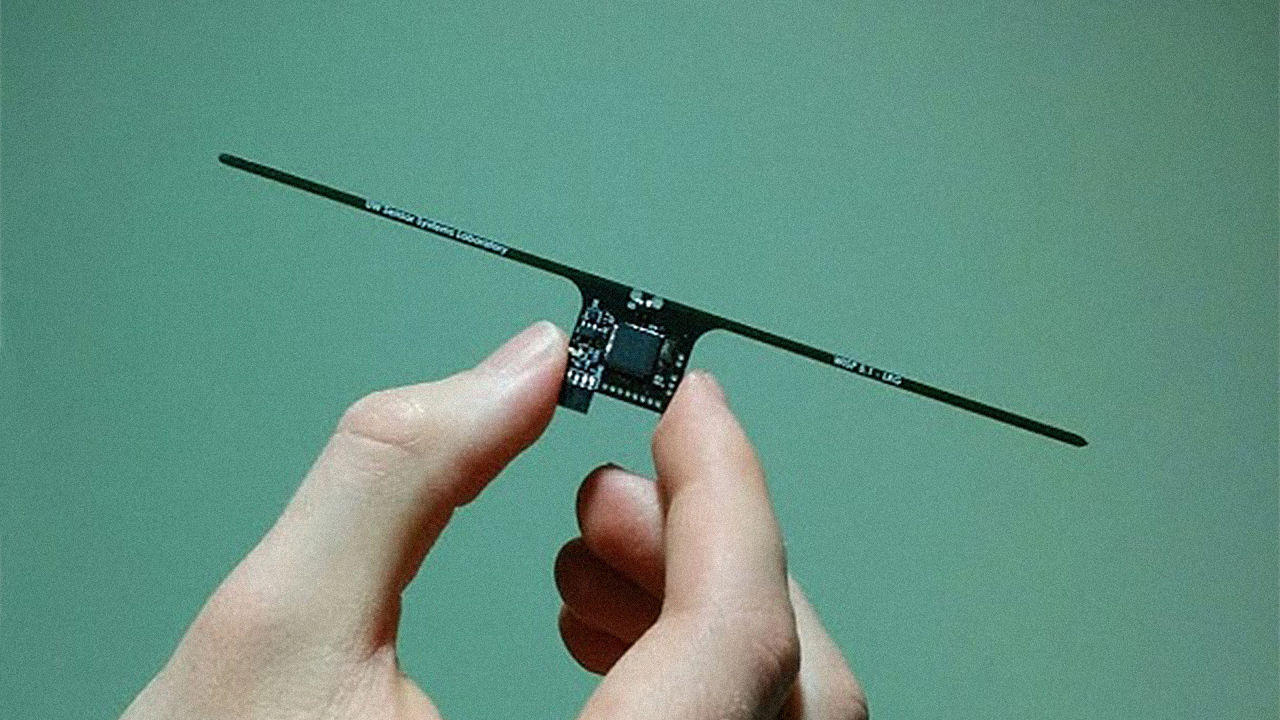Trease is a mechanical engineer at NASA’s Jet Propulsion Laboratory, where he works on solving one of NASA’s biggest challenges: How to transport and deploy bulky objects as compactly and lightly as possible. A couple years ago, NASA began exploring ways to launch and deploy increasingly large solar panels without taking up more room and cargo weight. It turned out that Trease’s childhood hobby was a promising way to accomplish that.
Working with students and faculty at Brigham Young University, as well as origami master Robert Lang, the engineers at the Jet Propulsion Laboratory have come up with a preliminary prototype for a 1 cm-thick solar array that would be able to expand from 8.9 feet in diameter to 82 feet. The foldable material uses a technique Trease and his fellow researchers call “hannaflex,” which looks like a flower when compacted and blossoms out to a flat, circular form. “This is just begging to be deployed with centrifugal force,” says Trease. “We could have it on spacecraft where we just spin it and that force allows the panels to deploy out to their position.”
Trease is obviously skipping a few steps for the sake of illustrating the concept’s potential. NASA is still years away from building a full-sized working prototype (the current prototype expands to a diameter of 4.1 feet). And there are still plenty of issues to work out, including how to actuate movement in the material. They’re toying with motors that would pull the material and shape memory alloys, which can shift shape when an electrical current runs through it. To illustrate: In the video you watch as six sets of hands unfolds the compacted material to its flat shape, but Trease is quick to say that’s not exactly a viable scenario for space. “We know that they unfold nicely,” he says. “But we can’t have a team of astronauts out there doing the unfolding for us.”
Even finding a material that can withstand this kind of repeated stress is still in the works. “Origami has historically been done in paper. Now we’re looking at, how do you fold metals? How do you fold plastics?”he says, adding that it’s also a matter of how many times a material can be folded and unfolded before it wears out.

Challenges aside, NASA is finally taking origami, as a principle, seriously. The lab recently held a workshop where six of the most accomplished paper folders helped brainstorm how the field could be applied to NASA’s technology. They came up with ideas like a spiraling spring fold that could work for shape-shifting antennas and new origami applications for deploying mirror segments and solar sails. “Now with one general technique we’ve open the door to deploy much larger versions of all of these,” says Trease.
When taken in the context of space, larger, lighter and more compact versions of these mechanisms would add to their efficiency—more solar power harvested, more thrust for a rocket, clearer signals captured from farther away. All this possible, from what many people view a children’s pastime. “The public has to know it’s more than just paper folding, it’s more than just this children’s art or something you do in school,” he says. “There’s a lot of artistic expertise in understanding the folds, but it’s heavily backed up by math and engineering.”
via wired.com



